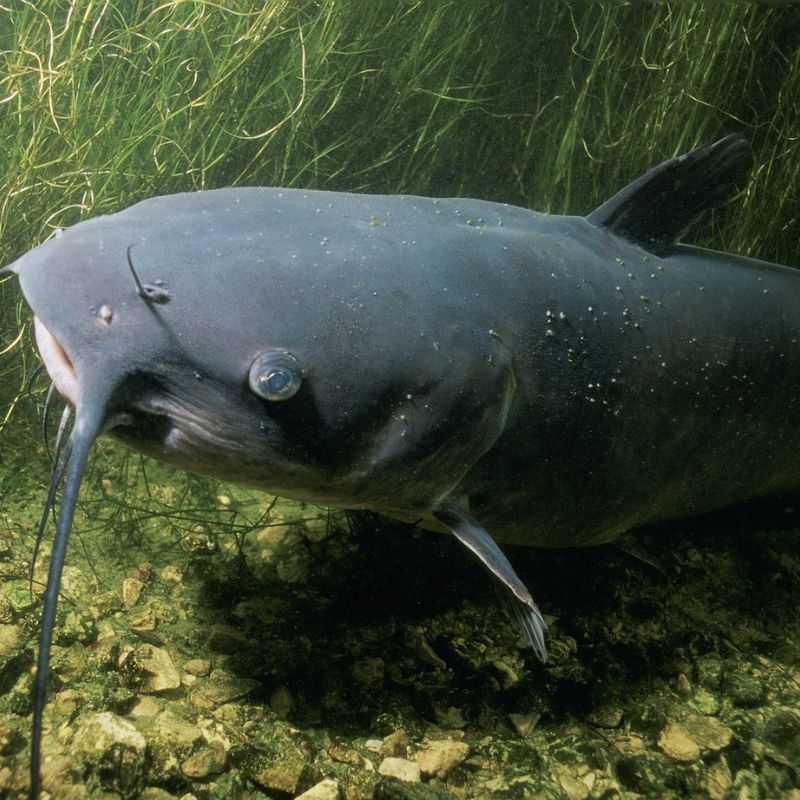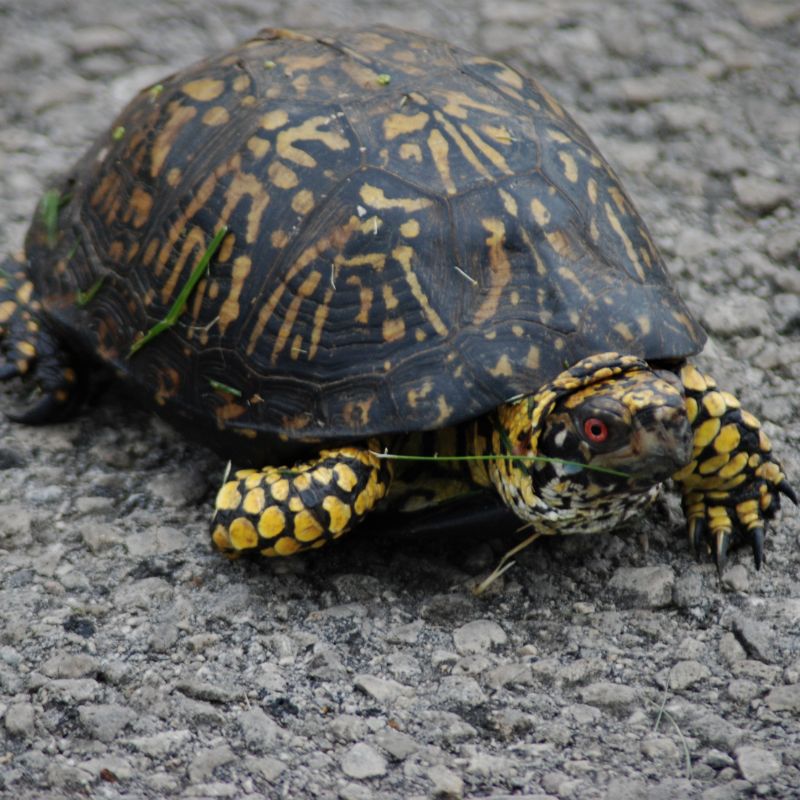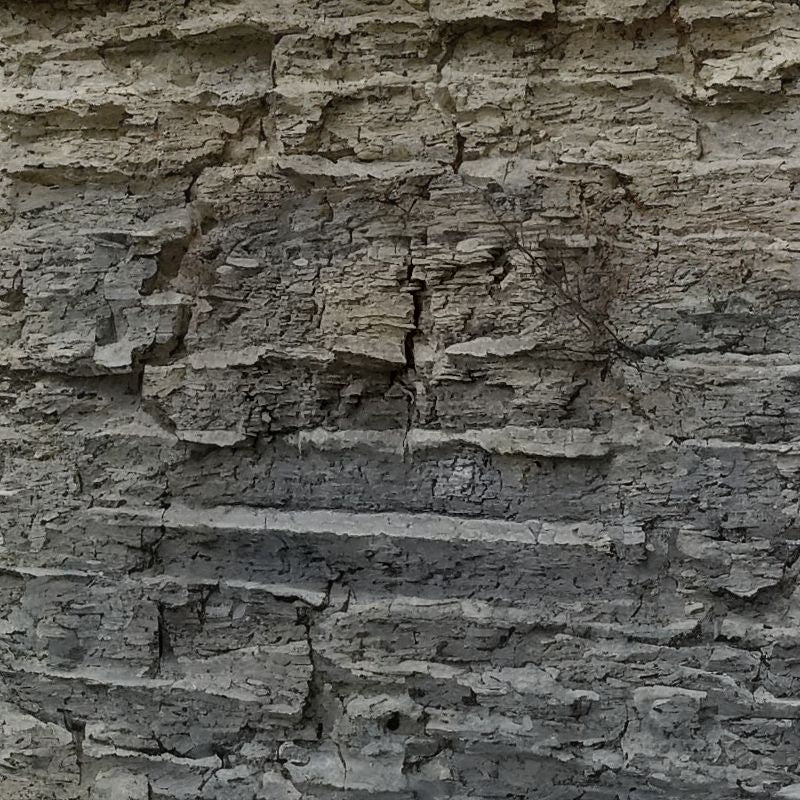Explore the Fascinating History of Kansas
Take our Kansas Trivia Quizzes for a Chance to Win a 6-Month Subscription to History By Mail!

The History of Kansas
Journey Through Kansas Trivia
Welcome to our Kansas history and trivia page, presented by History By Mail. Join us as we embark on a journey through the captivating past and cultural tapestry of the Sunflower State. From ancient Native American civilizations to European exploration and the modern era, we'll explore Kansas' hidden gems and challenge your knowledge with entertaining quizzes. Let's uncover the rich history and intriguing trivia of Kansas together.
Kansas, known as the Sunflower State, is a land of extraordinary history and diverse heritage. From the indigenous tribes who first inhabited the region, such as the Wichita, Pawnee, and Kansa, to the impact of French and American exploration and the establishment of settlements, Kansas holds a captivating legacy. From the bustling city of Wichita to the vast prairies and iconic Flint Hills, the state showcases a blend of cultures, natural beauty, and a deep connection to its Native American and pioneer roots.
Join us as we unravel the intriguing history and trivia of Kansas, delving into its role in shaping American history, its contributions to agriculture and industry, and the fascinating stories that make it a unique and cherished part of our nation's heritage.
Facts about Kansas
State Abbreviation: KS
Capital: Topeka
Name Origin: Kansas’ name comes from the Kansa Native American tribe, which means "People of the South Wind."
Nickname: Sunflower State; Jayhawk State
Statehood: January 29, 1861 (34th State)
State Motto: Ad astra per aspera (To the stars through difficulties)
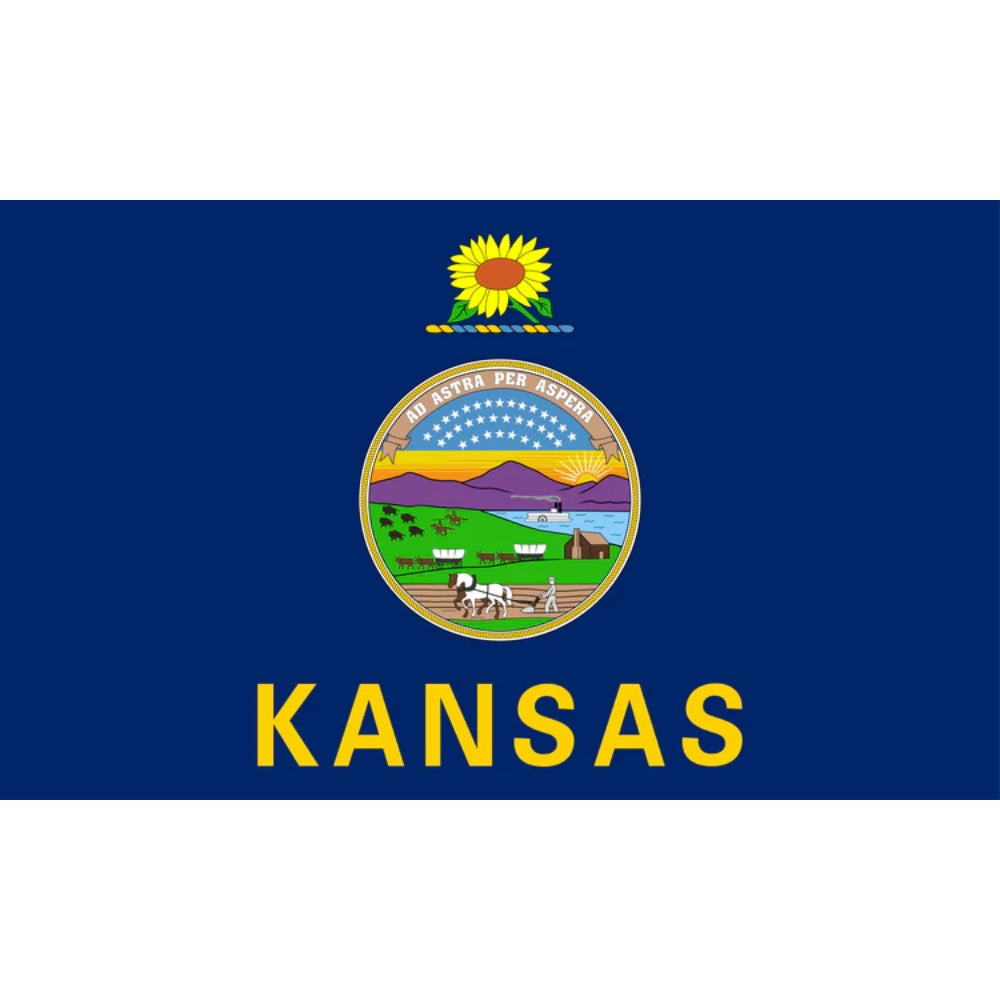
Kansas' Flag
In continuous use since 1927, the Kansas state flag underwent a minor alteration, incorporating the state's name along the bottom. The flag features a blue backdrop showcasing the state seal, crowned by a sunflower, the official state flower. The sunflower is adorned with a heraldic wreath in blue and yellow hues.
Kansas' Great Seal
At the top of the seal is the state motto, "Ad Astra per Aspera," meaning "To the Stars through Difficulties." This motto serves as a reminder of the perseverance and determination of the people of Kansas in overcoming challenges and reaching for their goals.
The state seal depicts a tranquil landscape with a rising sun in the background, symbolizing the dawning of a new era. In the foreground, a farmer plows a field, representing the state's rich agricultural heritage and its vital role in feeding the nation. To the left of the farmer, there is a steamboat sailing on a river, symbolizing the importance of commerce and transportation in the state's development.
Above the scene, a cluster of 34 stars represents Kansas as the 34th state to join the Union. The stars are arranged in the shape of a larger star, signifying that Kansas was once a part of the United States as a territory before achieving statehood.

--- State Trivia #1 ---
History of Kansas
Kansas, a state with a storied past and diverse landscape, has been shaped by the exploration, settlement, and conflicts that have left an indelible mark on its history. European exploration of the region began with the arrival of Spanish explorer Francisco de Coronado in 1541, followed by French claims made by Sieur de la Salle in 1682. Over time, control of the territory shifted between Spain, France, and eventually the United States through the Louisiana Purchase of 1803.
The early 19th century saw notable expeditions by Lewis and Clark, Zebulon Pike, and Stephen H. Long, who ventured through Kansas, exploring its lands and documenting its natural wonders. The establishment of forts, such as Fort Leavenworth, Fort Scott, and Fort Riley, played a vital role in protecting travelers along the Santa Fe and Oregon Trails, marking the first permanent white settlements in the region.
However, the prelude to the Civil War brought a dark chapter known as "Bleeding Kansas," as the pro- and anti-slavery forces clashed in a struggle that would leave a lasting impact on the state's history.
Present-day Kansas showcases a picturesque landscape dominated by wheat fields, oil-well derricks, cattle herds, and grain-storage elevators. The state is renowned for its wheat production and cultivates a diverse array of crops, including corn, sorghum, oats, barley, soybeans, and potatoes. Kansas also holds a prominent position in petroleum production and is a leading producer of zinc, coal, salt, lead, and helium.
Cities like Wichita have emerged as prominent aircraft-manufacturing centers, specializing in private aircraft production, while Kansas City serves as a vital hub for transportation, milling, and meat-packing industries.
For those seeking points of interest, Kansas offers a range of attractions that delve into its history and heritage. The Kansas History Center in Topeka provides a comprehensive glimpse into the state's past, while the Eisenhower boyhood home, Eisenhower Memorial Museum, and Presidential Library in Abilene pay tribute to the legacy of President Dwight D. Eisenhower. Visitors can explore John Brown's cabin in Osawatomie, experience a recreated Front Street in Dodge City, and discover the historical significance of Fort Larned, Fort Leavenworth, and Fort Riley.
With its fascinating historical sites, agricultural prowess, industrial achievements, and diverse landscapes, Kansas invites visitors to embark on a journey of exploration, uncovering the captivating stories and unique character that define the Sunflower State.
State Symbols
Fun Facts
- v
--- State Trivia #2 ---

Things To Do in Kansas
- Visit the Tallgrass Prairie National Preserve: Immerse yourself in the breathtaking beauty of the tallgrass prairie, where you can hike along scenic trails, spot wildlife, and learn about the unique ecosystem and history of the region.
- Explore the Dwight D. Eisenhower Presidential Library, Museum, and Boyhood Home: Discover the life and legacy of President Dwight D. Eisenhower in his hometown of Abilene. Explore the museum exhibits, tour his childhood home, and gain insights into his remarkable military and political career.
- Experience Old Cowtown Museum: Step back in time at the Old Cowtown Museum in Wichita. This living history museum depicts life in the 19th-century frontier town, featuring historic buildings, costumed interpreters, and engaging demonstrations that bring the past to life.
- Enjoy the Kansas City Plaza: Indulge in shopping, dining, and entertainment at the Kansas City Plaza. This iconic outdoor shopping district offers a vibrant atmosphere, beautiful architecture, and a wide range of shops and restaurants to explore.
- Visit the Flint Hills Discovery Center: Learn about the unique Flint Hills region at the Flint Hills Discovery Center in Manhattan. Engage with interactive exhibits, watch educational films, and gain a deeper understanding of the Flint Hills' natural beauty, cultural heritage, and conservation efforts.
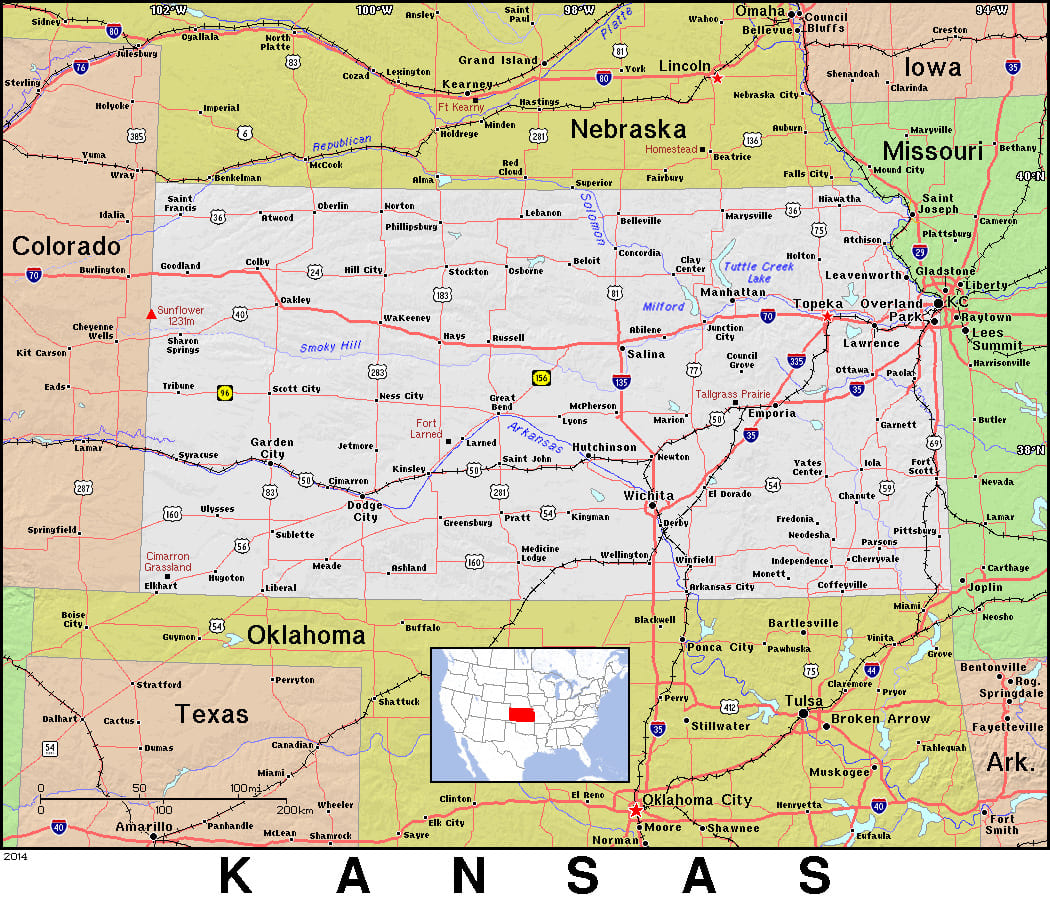
General Map of Kansas
Kansas, known as the "Sunflower State," is a captivating destination located in the heart of the Midwest region of the United States. Renowned for its wide-open prairies, iconic sunflower fields, and rich agricultural heritage, Kansas offers a wealth of experiences for visitors to discover. From exploring charming small towns to immersing in the beauty of its natural landscapes, Kansas invites travelers to embark on a memorable journey filled with diverse attractions, warm hospitality, and a deep connection to its cultural roots.
Famous People From Kansas
--- State Trivia #3 ---
FREQUENTLY ASKED QUESTIONS (FAQ) ABOUT KANSAS
Kansas is often called the "Sunflower State." This nickname reflects the state's abundant growth of wild sunflowers, which are native to the region and have become a symbol of its natural beauty.
Kansas was admitted to the Union as the 34th state on January 29, 1861. Its entry was closely linked to the tumultuous events of "Bleeding Kansas" and the broader tensions over slavery.
The landmark U.S. Supreme Court case "Brown v. Board of Education" (1954) originated in Topeka, Kansas. It played a pivotal role in the civil rights movement by declaring racial segregation in public schools unconstitutional.
Yes, Amelia Earhart, the pioneering aviator, was born in Atchison, Kansas, in 1897. Her achievements in aviation and her mysterious disappearance have left a lasting legacy.
Related Resources
- Official Website of the State of Kansas: The official website provides information about the state government, business resources, tourism, and more. Visit: https://www.kansas.gov/
- Kansas Department of Wildlife, Parks and Tourism: Explore outdoor activities, state parks, hunting and fishing opportunities, and plan your visit to Kansas. Visit: https://ksoutdoors.com/
- Kansas Historical Society: Learn about Kansas's rich history, access archival resources, visit historic sites, and discover educational programs. Visit: https://www.kshs.org/
- Kansas Department of Transportation: Access information about road conditions, travel resources, maps, and transportation services in Kansas. Visit: https://www.ksdot.org/
- Kansas State Parks: Discover the beautiful state parks of Kansas, including recreational activities, camping options, and natural attractions. Visit: https://ksoutdoors.com/State-Parks/
- Kansas Travel & Tourism: Plan your trip to Kansas, explore attractions, events, cultural destinations, and find travel inspiration. Visit: https://www.travelks.com/
- Kansas Museum of History: Learn about the history of Kansas through engaging exhibits, educational programs, and online resources. Visit: https://www.kshs.org/p/kansas-museum-of-history/15868
- Kansas Cosmosphere and Space Center: Experience the wonders of space through exhibits, artifacts, and educational programs at this renowned space museum. Visit: https://cosmo.org/
- Kansas Agriculture: Explore the agricultural heritage of Kansas, learn about farming practices, crops, and the importance of agriculture to the state. Visit: https://agriculture.ks.gov/
- Dwight D. Eisenhower Presidential Library, Museum, and Boyhood Home: Discover the life and legacy of President Dwight D. Eisenhower through exhibits, archives, and educational programs. Visit: https://www.eisenhowerlibrary.gov/

